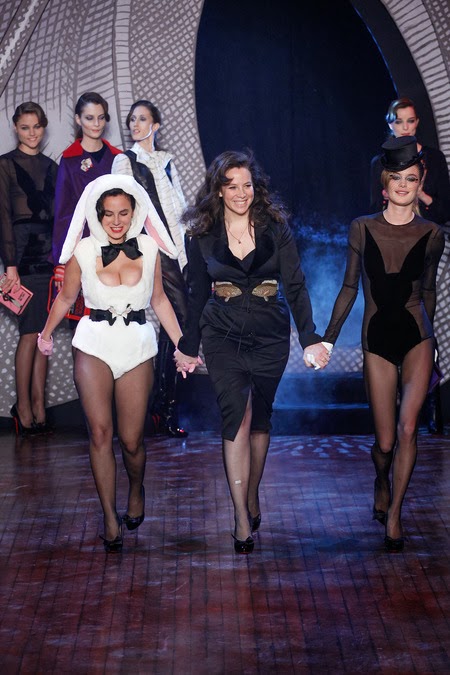Bleak.
Incestuous. Sadistic. Visceral. Painful. Devastating. Honest. Psychotic. Cruel.
Captivating. Tragic. Empty. Loneliness.
Insecure. Dysfunctional. Happy. Lies. Anxious. Satirical Horror. Melodrama.
Toxic. Abuse. Reflection. Neurosis. Guilt.
Failure. Macabre. Massacre. Fear. Ambition.
When
David Cronenberg’s Maps to the Stars (2014) has been reviewed by major media
outlets and renowned film reviewers the subject matter, plot and emotions tend
to utilise the aforementioned terms.
In
light of that, Cronenberg’s unflinching representation of Hollywood life
essentially delves into the corrupted psyche of a culture. This Hollywood
society is biologically incestuous and seems to develop, like a living
organism into a monstrous and nefarious creature that consumes each new
generation, destroying their morality, state of minds and characters, and
eventually, in the case of the two of the protagonists, their lives. Ambition
within Hollywood is encompassed by a series of actors and actresses who define
themselves in accordance to the roles that they are asked to play. Living in a
world of make-believe is constructed as the road to devastation in this film
which fundamentally chronicles a community struggling through a nervous
breakdown, culminating in its total collapse of mental faculties and an
implosion of each character due to the weight of these Hollywood expectations.
Depicted
in a traditional multiple-storylines style plot such as Paul Haggis’s 2004 film
Crash, Maps to the Stars demonstrates a number of different characters and
gradually interweaves the webs between them to demonstrate the concentration of
this festering world which has birthed its habitants from the same communal
womb indicating that this Hollywood area is fundamentally corrupt and in its
very essence each inhabitant is a by-product of incestuous creation.
Julianne
Moore plays Havana Segrand, the daughter of a famously successful actress who
suffers from mental delusions and visions of her mother taunting her failing
career. Throughout “new-age” therapy
sessions with Stafford Weiss, played by John Cusack, Havana becomes convinced
that her mother physically and sexually abused her as a child. Whilst auditioning
a part as her mother in a movie remake of one of her mother’s films, Havana
becomes subject to an increasing imposing mental delusion where her mother
jeers at her, mocks her subordinate acting skills, as well as her desperate
attempt to emulate her mother. Stafford is the father of13-year-old child star
Benjie (Evan Bird) who seems to represent the typical deterioration of the
young Disney star who forgoes the typical child maturing too fast into a world
of sex, drugs, rock ‘n’ roll, and, in the case of this incestuous Hollywood
world, self-entitlement, arrogance and a resurgent link to Oedipal desires.
Benjie’s exiled sister, Agatha (Mia Wasikowsa) has spent years in a mental
institution since drugging her brother and then setting the house on fire,
which she justifies utilising warped mentally unstable logic. On her return to
Hollywood, she meets and befriends Jerome (Robert Pattinson) a limo driver and
actor struggling to break into showbiz. She later becomes Havana’s assistant or
more colloquially dubbed: “chore whore” and experiences a very powerful
awakening to the mundane nature of Havana’s life.
 This
cinematic portrayal of Hollywood negotiates a world obsessed with drugs, age,
sex and money. As a 13-year-old, Benjie is the “most powerful” actor, particularly
compared to his failing foil counterpart Havana who is even older, if that’s
possible, than the 26-year-old actress who is declared to be “totally
menopausal”. Through drug-fuelled lenses, fleets of celebrities age out of
importance and essentially resign themselves to an infrastructure which
challenges their mental and moral stability. Age becomes the currency of this
superficial world. Benjie being the highest paid, despite his unattractive
personality, character and morality. Whereas, Havana is only offered the job
she so desperately desire after the son of her rival mysteriously drowns in his
father’s swimming pool leading to the mother’s mental collapse.
This
cinematic portrayal of Hollywood negotiates a world obsessed with drugs, age,
sex and money. As a 13-year-old, Benjie is the “most powerful” actor, particularly
compared to his failing foil counterpart Havana who is even older, if that’s
possible, than the 26-year-old actress who is declared to be “totally
menopausal”. Through drug-fuelled lenses, fleets of celebrities age out of
importance and essentially resign themselves to an infrastructure which
challenges their mental and moral stability. Age becomes the currency of this
superficial world. Benjie being the highest paid, despite his unattractive
personality, character and morality. Whereas, Havana is only offered the job
she so desperately desire after the son of her rival mysteriously drowns in his
father’s swimming pool leading to the mother’s mental collapse.
Overall,
this movie is shocking and strange. It has a satirical tone mixed in with the
darkness and dreamy alternate reality feel. There are comedic moments which are
interspersed in appropriate moments as if this movie has taken on an element of
Asperger’s, unaware of timing, empathy and the code of conduct for general
social interaction. This is exemplified by Havana’s reaction to the news that
her actress rival’s son has died and she will now have the part she desired.
She begins singing “Na-Na-Na-Na. Na-Na-Na-Na. Hey-Hey-Hey. Goodbye”,
demonstrative of her self-obsession and lack of empathy for others. The film
culminates in her murder by her “chore whore” which is savagely and sickeningly
audible. The film concludes with a mass suicide of sorts, whereby each of the
characters dies physically and metaphorically.
This
film is an unflinching exfoliation of the sheeny surface of Hollywood life
which is perceived by the average Joe public. This satirical approach to the
attack against Hollywood idealism is undertaken in the most sadistic and
masochistic manner possible, essentially unveiling the roots of an entire culture
as incestuous, evil, immoral and corrupt to its very core. This film is a very
visceral attack at the jugular of the body of the Hollywood politic.



.jpg)




























